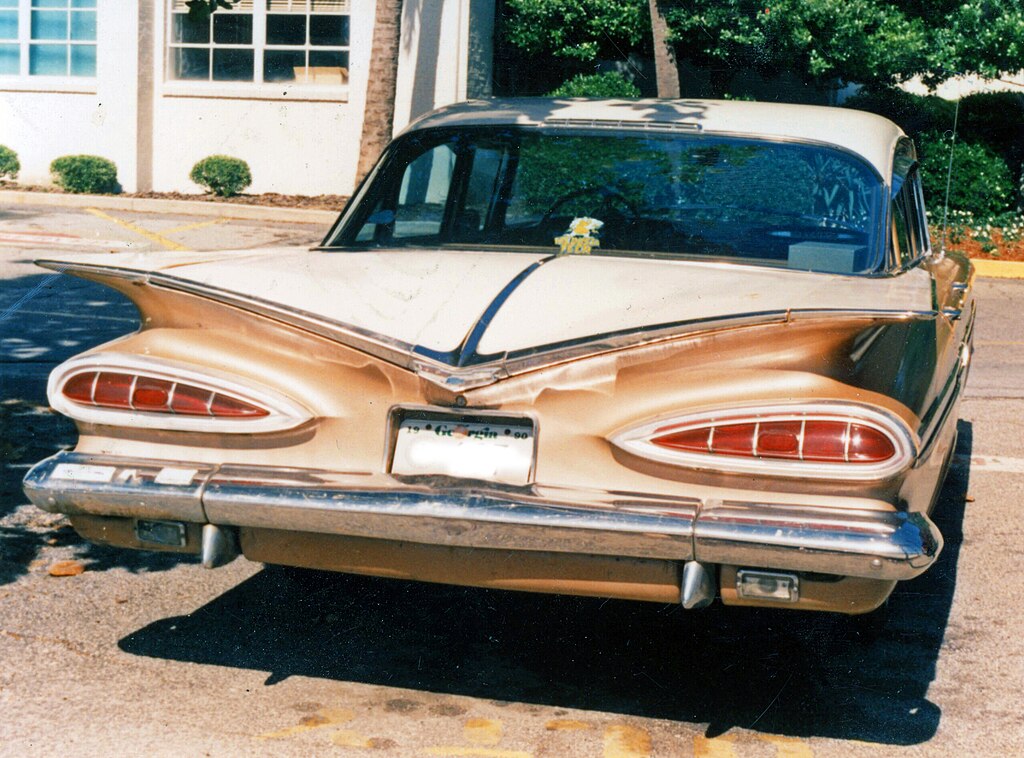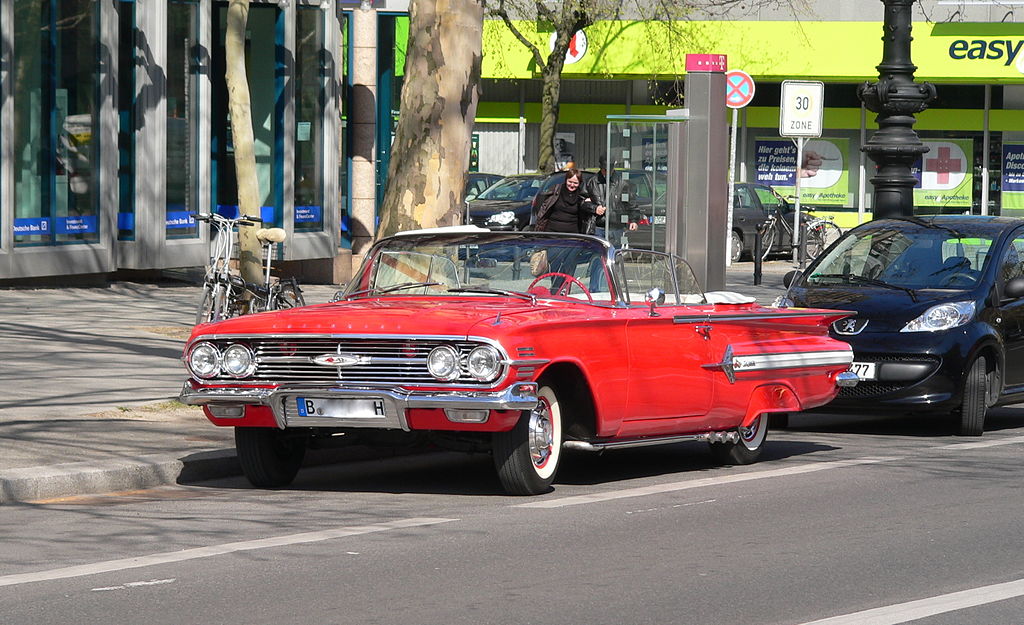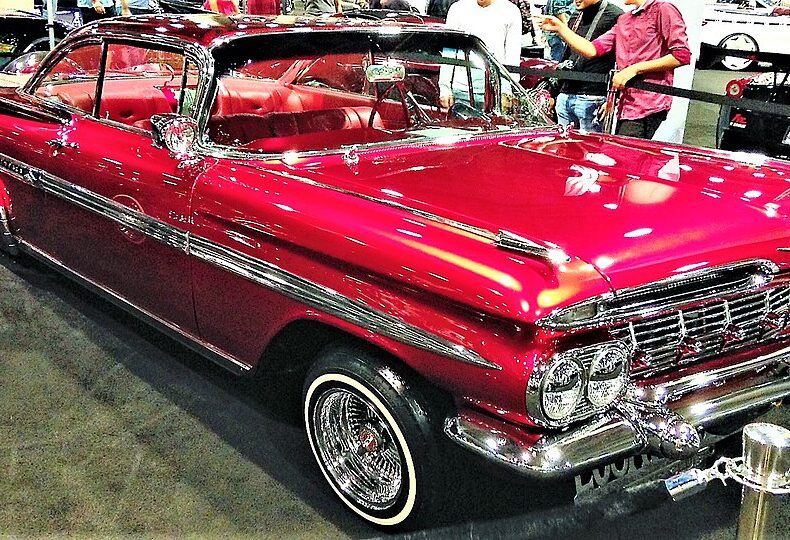
Every time I spot a 1959 or ’60 Chevrolet Impala, I find myself mesmerized by those dramatic bat-wing fins and stunning chrome catching the late afternoon sun. To my eye, there’s something almost magical about how chrome and steel can combine into automotive art. While the second-gen Chevy Impala’s predecessor, the 1958 model, embraced Chevrolet’s conservative styling, the ’59 Impala broke all the rules. It wasn’t just a car – it was Detroit’s vision of the future, rendered in sheet metal and gleaming chrome.
The transformation from 1958 to 1959 was nothing short of revolutionary at the time. Gone were the restraints of previous design philosophies, replaced by a bold statement that merged engineering precision with artistic flair. The second-generation of the Chevy Impala emerged as GM’s answer to Chrysler’s Forward Look, but it went beyond mere competition – it redefined what an American car could be.
Engineering prowess was evident in every curve and angle. The new X-frame chassis allowed for a lower stance and improved handling, while the redesigned suspension delivered a smoother ride. But it was the artistic elements that captured America’s imagination: the horizontal rear deck that seemed to float in air, the cat-eye taillights that glowed like jewels at dusk, and that unmistakable front end that looked ready to devour the highway ahead.
Changes From the First-Generation to the Second-Gen Chevy Impala

The transformation from 1958 to 1959 marked one of the most dramatic year-over-year redesigns in automotive history. The conservative ’58 Chevy Impala’s chrome-laden front end gave way to a wider, flatter face with “eyebrow” headlights. The modest tailfins of ’58 transformed into the iconic “bat wings” stretched across nearly the entire width of the car.
Inside, the 2nd-gen Chevy Impala boasted an entirely new interior layout with a “floating” instrument panel and “glove box” styling that mimicked the exterior’s horizontal themes. The X-frame chassis dropped the car’s height by three inches, while the overall length grew to 211 inches – making the ’59 appear even longer and lower than its predecessor.
Engineering Innovations
Let’s move into the engineering innovations section. The X-frame chassis was more than a styling choice – it fundamentally changed how the ’59-’60 Impala handled. The frame’s design allowed the car to sit lower while maintaining structural rigidity, a crucial advancement for the era.
The suspension saw significant updates too. New rear coil springs replaced the previous leaf springs, delivering a smoother ride that better matched the car’s luxury aspirations. The front suspension retained the basic design of the ’58 but was retuned for the new chassis dynamics.
Artistic Elements

The artistic elements of the ’59-’60 Impala showcased Detroit’s most daring design flourishes. The horizontal rear deck created an illusion of flight, with its bat-wing fins stretching dramatically outward. Chrome trim emphasized this floating effect, wrapping around the rear in an unbroken line that caught sunlight from every angle.
The cat-eye taillights became an instant design signature. Set within chrome bezels and angled to match the fins’ sweep, they transformed the night view into something otherworldly. Up front, the massive grille extended across the car’s full width, its jeweled pattern complementing the hooded headlamps above.
Revolutionary, Not Evolutionary
When Harley Earl, GM’s legendary design chief, gave his team the mission to create the 1959-’60 Impala, they faced mounting pressure from Virgil Exner’s “Forward Look” designs at Chrysler. Earl knew GM needed something revolutionary, not evolutionary. The result was a complete departure from Chevrolet’s traditional design language.
Earl’s team worked in GM’s secretive design studios, crafting a vehicle that would embody America’s fascination with the Space Age. The ’59-’60 Impala’s most distinctive features – those dramatic horizontal fins and the “eyebrow” headlights – came directly from Earl’s fascination with aircraft design. This aviation influence wasn’t subtle; it was a bold statement about America’s technological prowess.
Yet the design process wasn’t without controversy. Some GM executives worried the styling was too extreme for Chevrolet’s typically conservative buyers. But Earl stood firm, convinced that American car buyers were ready for something dramatically different. History would prove him right – the ’59 Impala became one of Chevrolet’s most memorable designs.
Detroit’s Daring Dream: When the Second-Gen Chevrolet Impala Changed Everything

The ’59 Impala’s market impact exceeded even GM’s ambitious expectations. Initial public reaction ranged from shock to admiration, but sales numbers told the real story. Chevrolet moved over 473,000 Impalas in 1959 alone, proving Earl’s instincts right. The car became a status symbol, particularly the convertible and hardtop models.
Ford and Chrysler scrambled to respond to the Impala’s success. While Chrysler had pioneered some of these design elements, the Impala’s execution captured the public’s imagination in a way competitors couldn’t match. The ’60 model continued this success with refined styling that toned down some of the more extreme elements while maintaining the car’s distinctive character.
The Legacy of the Second-Generation Chevrolet Impala
The Impala’s legacy extends far beyond its initial production run. Today, pristine second-generation models regularly command six-figure prices at auctions, particularly the rare 348-powered models with factory performance options. Car collectors prize these vehicles not just for their design, but as symbols of American automotive confidence at its peak.
The ’59-’60 Impala’s influence still shows up in modern car design too. Its horizontal design themes and dramatic lighting elements echo in contemporary vehicles, while its integration of engineering and aesthetics remains a masterclass in automotive design. The car stands as proof that sometimes the boldest choices make the most lasting impact.
Just as engineering and artistry merged to create the ’59-’60 Impala’s groundbreaking design, these cars continue merging past and present through dedicated collectors and admirers. They remind us that automotive excellence comes from daring to push boundaries while maintaining impeccable attention to detail.
Join the conversation!
Want to share your own Impala stories or see more classic car content? Join us in the Classic Cars Online US Facebook group, where enthusiasts gather to chat and celebrate automotive history’s finest moments.

